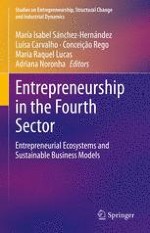Abstract
In the current environment, markets are becoming increasingly globalized and more competitive. So, organizations are challenged to differentiate themselves or die. The textile and clothing products sector represent a very important and well-established industry that also provides a dynamic boost to the Spanish economy. Especially on the fashion industry, it can be seen how large companies aim to follow the latest trends, it is known as fast fashion.
This work analyses the case of ECOALF, it can observe that this company has implemented a marketing strategy that revolves around sustainable marketing. Briefly developing ECOALF marketing strategies we can observe the following.
Regarding product strategies. Their garments are made from recycled materials, such as plastic bottles from the bottom of the ocean, recycled nylon, cotton and wool and recycled used tyres. The production points go along with the collection’s points of the products, which are made in different countries such as Spain, Portugal, Taiwan or Japan among others. The aim is to create products that promote sustainability among consumers seeking design and quality. In addition, ECOALF does not incorporate natural fur or leather in its garment collection
Regarding the price, in the case of ECOALF, the high cost of manufacturing is reflected in the price of the final product to the consumer.
Based on multi-channel distribution, through online sales, but also with a distribution not only in their official stores (Spain, Netherlands and Germany), ECOALF has presence in different boutiques and shops in many countries: Besides having stands and points of sale in department stores.
Its communication strategy stands out because ECOALF seeks to retain and attract buyers by increasing the perceived quality of the brand, not only by increasing its social networks, or with the product placement or making alliances with more established brands in the market or celebrities. The company constantly seeks to improve the tangible attributes of its products. The philosophy behind brand management is not only based on sustainable marketing but they also want to communicate the quality of fabric and design.
The original of the case study is the change that is taking place in consumers’ purchasing decision and how the world of fashion is evolving. On the one hand, the consumer culture and, on the other hand, consumers more aware with the Fourth Sector and sustainable fashion.
